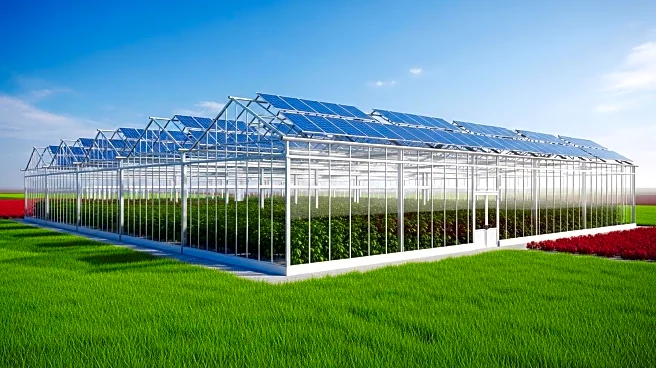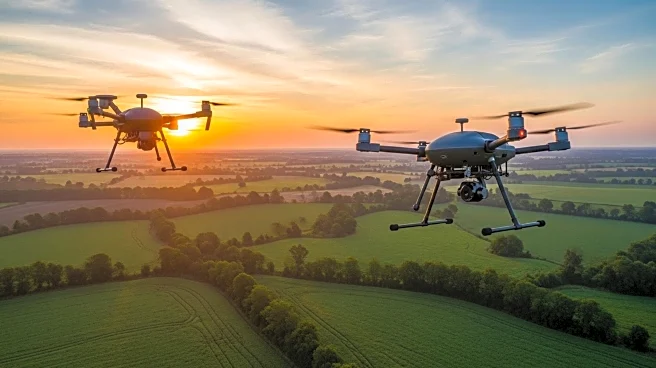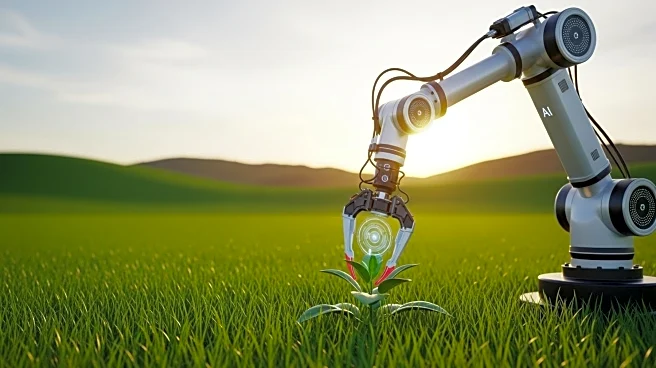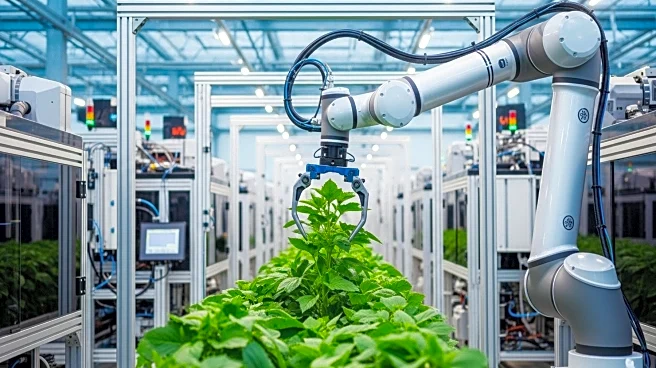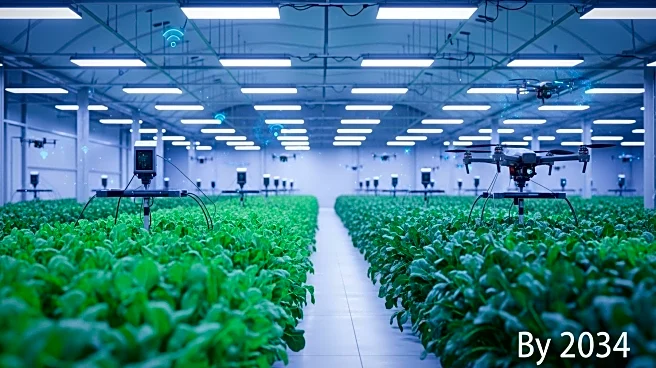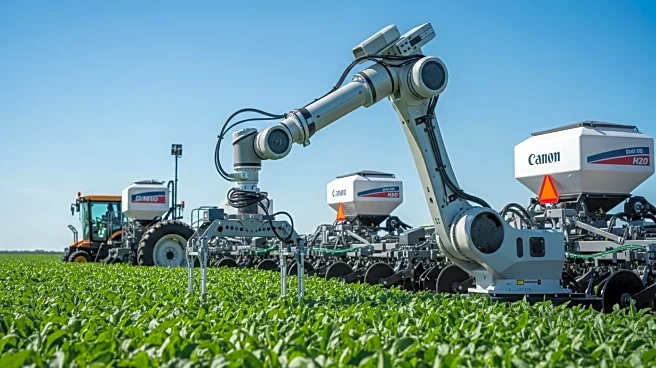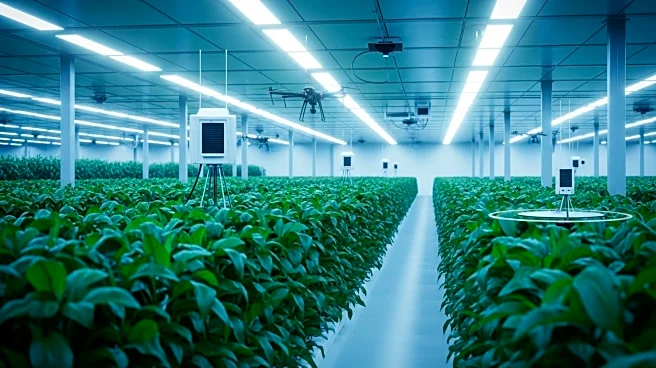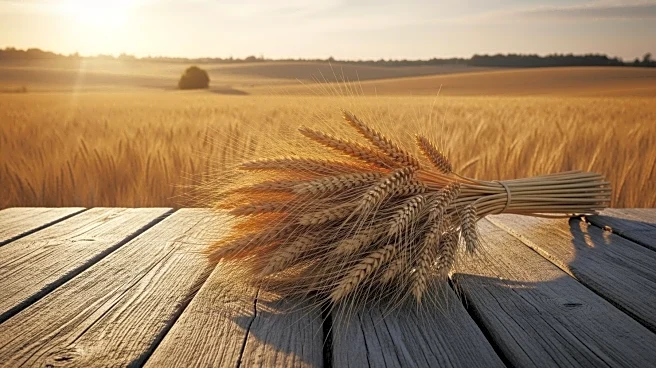What's Happening?
The U.S. smart farming market is projected to experience significant growth, driven by technological advancements and increased adoption of precision agriculture practices. The market, valued at $11.12 billion in 2022, is expected to reach $22.45 billion by 2031, with a compound annual growth rate (CAGR) of 9.1%. Key developments include investments in autonomous machinery, climate-smart commodities, and sustainable agriculture operations. Companies like Sensei Farms and Bonsai Robotics are expanding their operations and securing funding to enhance their technological capabilities.
Why It's Important?
The growth of the smart farming market reflects a broader trend towards digital transformation in agriculture. By integrating technologies such as IoT, data analytics, and automation, farmers can optimize resource use, improve crop yields, and enhance sustainability. This shift is crucial for addressing challenges such as labor shortages, climate change, and food security. The expansion of smart farming practices can lead to increased efficiency and profitability for farmers, while also contributing to environmental conservation efforts.
What's Next?
As the market continues to grow, there will likely be increased investment in research and development to further advance smart farming technologies. Policymakers may also play a role in supporting the adoption of these technologies through incentives and regulatory frameworks. The success of smart farming initiatives could influence global agricultural practices and set new standards for sustainability and efficiency. Additionally, collaborations between technology providers, agricultural businesses, and government agencies may drive further innovation in the sector.

